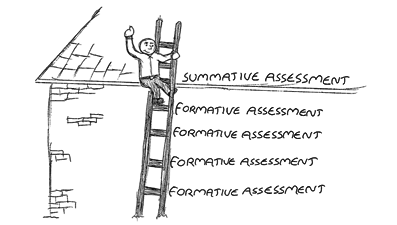Assessment

Assessment is the process of gathering evidence about a student's level of achievement, analyzing that evidence, and calibrating practice based on that evidence. Unfortunately, many teachers observe students everyday and coin that as their assessment. However, observation is not assessment. Having a written record of what is observed and a criteria for the observation is assessing. During my teaching experience, I have been able to explore with diagnostic, formative, alternative, authentic, and summative assessments that have been able to allow me to do exactly what assessment is suppose to be for. Collect, analyze, and calibrate. Assessment in the Physical and Health Education field allows us to measure what students know, how students feel, and what skills students can perform. All of this directs our teaching to improve on teacher effectiveness which in turn, results in student learning being achieved. We as educators have the main goal of making sure students are learning in the given field. Through my assessment practice, I have been able to collect evidence that has been reliable, analytical, holistic based, and achievement oriented. Measuring student learning is critical. However, the primary goal should be to enhanced learning for all students. Assessment serves two essential purposes:
-
Assessment for learning (Informal/Formative)
-
Formative assessments are used to guide student learning by providing feedback that leads to student achievement. When a teacher sets lesson or unit objectives for their students, formative assessment allows students and teacher to collect evidence towards that goal.
-
Along with tracking student progress, formative and alternative assessments guide teachers measure their own effectiveness of teaching. Just like student assessment, this allows for reflecting and adjustments to be made if needed. One of my favorite sayings is to be a "life long learner." Constantly refining and adjustment my teaching behaviors based on student evidence and data will only make me a better teacher. More importantly, this will help my students grow in the psychomotor, cognitive, and affective learning domains.
-
-
Assessment of Learning (Formal/Summative)
-
Assessment for learning is a measuring tool to inform students on grade based on criteria set by the teacher. This also is a final point to inform the teacher on how effective they did teaching the content. Summative assessment evidence can be used to inform us if a unit worked well or didn't work well and how we can adjust our practice to make improvements.
-
The assessments I designed, implemented, collected, and reflected on during my experience were:
-
Developed for all three domains
-
Developed before instruction
-
Focused on developmentally appropriate critical elements and concepts
-
Provided me student evidence of learning
-
Allowed students to know what content was important
Below are some assessments I have implemented in my practice along with impact on student learning reports.